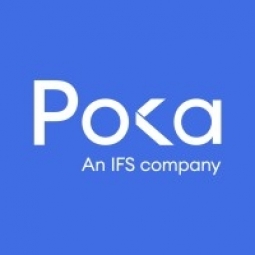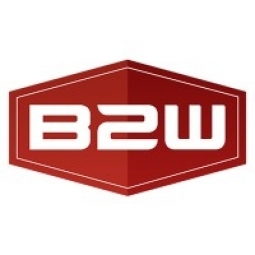Case Studies.
Add Case Study
Our Case Study database tracks 22,657 case studies in the global enterprise technology ecosystem.
Filters allow you to explore case studies quickly and efficiently.
Download Excel
Filters
-
(407)
- (253)
- (84)
- (60)
- View all
-
(324)
- (201)
- (103)
- (25)
- View all
-
(265)
- (139)
- (39)
- (31)
- View all
-
(263)
- (120)
- (84)
- (74)
- View all
-
(251)
- (212)
- (70)
- (32)
- View all
- View all 13 Technologies
- (159)
- (114)
- (103)
- (101)
- (98)
- View all 42 Industries
- (1,315)
- (322)
- (154)
- (138)
- (124)
- View all 13 Functional Areas
- (558)
- (433)
- (294)
- (182)
- (153)
- View all 71 Use Cases
- (915)
- (405)
- (380)
- (231)
- (78)
- View all 8 Services
- (64)
- (64)
- (64)
- (51)
- (44)
- View all 191 Suppliers
Selected Filters
---nyse--hpe_1.jpg)
|
HPE SimpliVity Hyperconverged Infrastructure Case Study - The iFish Group
The iFish Group was in the process of a capacity purchase/upgrade of their existing infrastructure which led to an overall platform review. Prior to deploying HPE SimpliVity Hyperconverged Infrastructure, they found the management of multiple solutions and vendors to be manageable, but not ideal. The company was looking for a solution that could simplify their infrastructure and improve performance.
|
|
|

|
Pixowl Case Study
Pixowl, a mobile game studio, was facing a challenge in delivering smooth gameplay to its users. The mobile gaming industry is highly competitive and requires excellence in execution. One of the key factors in this execution is the game's overall performance, including the speed of loading its contents and the refresh time. In the mobile gaming industry, there is a player drop-rate of 20-40% for games if initial load times are over a minute long. Pixowl's game content, which is cloud-hosted by Digital Ocean, needed to be delivered as fast as possible to their players. However, Pixowl is a lean, indie gaming studio, and their focus is on making great, fun, compelling games for their target audience of kids and families, not to develop complex backend technical solutions to deliver their content. Thus, Pixowl’s challenge was to globally scale without distracting their engineers trying to develop games and avoiding internal headaches.
|
|
|

|
European Manufacturer Turns To Radware To Build A Custom Security Solution
The European manufacturing company had a complex, globally-distributed network comprised of data centers, remote offices and cloud-hosted applications. Each asset type had different requirements and faced different threat profiles. Traditional DDoS mitigation vendors did not have the flexibility or scope to offer full, cost-effective protection for all asset types. The company's previous security vendors had suffered a major breach the previous year. The company was looking for a solution that could provide protection for all its assets, including four globally distributed data centers running mission-critical applications, 150 cloud applications hosted on a large public-cloud provider, and three-dozen remote sales offices spanning the globe.
|
|
|

|
GRUPO BIMBO: Elevating Safety Standards and Well-Being Through Digitization and Connectivity
Grupo Bimbo, a global Mexico-based CPG company and the largest bakery in the world, was facing challenges in implementing higher safety standards across its 20 plants in 10 countries. The company's existing systems were unable to provide access and control over key insights such as safety incidents and investigations, progress of best practice SOP implementation, and real-time visibility and data into safety performance. This lack of visibility and control was hindering the company's ability to make proactive decisions to prevent workplace incidents and implement organization-wide changes.
|
|
|

|
Bimbo QSR | Achieving Next Level Occupational Safety Performance
Grupo Bimbo S.A.B. de C.V., the world's largest bakery, faced a lack of standardization across critical components of its safety program. This included safety incident investigations, safety observations, and good safety processes. The team identified an opportunity to improve safety performance by generating more insight into the safety program through standardizing operational procedures. They were already using Parsable Connected Worker® in the manufacturing side of the business and wanted to leverage this technology for safety. The challenge was to implement standardized safety program components in a multilingual environment across 20 plants in 10 countries.
|
|
|

|
Workforce Productivity & Digital Transformation: An ABB Success Story
ABB Saint Jean, a plant in the installation products division of ABB Group, was looking for ways to improve product quality and customer satisfaction, while driving greater efficiency in production. The plant recognized an untapped opportunity to harness and build upon the knowledge of its factory workers. They knew workers were key to uncovering what’s happening on the factory floor, finding solutions to problems and contributing to continuous improvement. However, the plant was facing a digital gap. The way they get their information and communicate had evolved dramatically in the past 15 years, but how they do things on the factory floor hadn’t changed in over 25 years.
|
|
|

|
Growing Agricultural Company Gets to Root of Successful Co-Lo Migration With NETSCOUT Visibility
The company’s acquisition of another agricultural business located continents away offered the commercial benefits of expanded market reach and production capacity. However, the acquisition also presented new information technology (IT) demands that needed to be addressed quickly. For example, the acquired company’s IT operations were managed by Help Desk resources and local technicians unequipped to meet the expanding monitoring demands of this now-global company. Wanting to reduce rather than expand their data center operations footprint, the decision was made migrate the acquired company’s business services into a regional Equinix co-lo facility. While this decision offered efficiencies and cost containment to the company, the Equinix site had not yet been instrumented for real-time monitoring of the transitioning agricultural business services. The parent company needed to assure business and service continuity before, during, and after the data center migration and required visibility and performance analytics to do so.
|
|
|

|
Resolving Industrial IoT Manufacturing Delays With NETSCOUT
The company had deployed a vendor’s productivity and process control solution that offered Human-Machine Interface (HMI) technology to connect plant floor operators to production-level manufacturing systems. In addition, this vendor technology offered Supervisory Control And Data Acquisition (SCADA) support to manufacturing operations. In supporting this solution, the manufacturer used hundreds of programmable logic controllers (PLCs) across plant floors to support their factory automation efforts. However, one performance issue that impacted the vendor productivity and process control solution proved difficult to resolve. In responding to related plant floor operators’ support requests, IT Operators saw performance latency in the productivity and process control technology was responsible for manufacturing delays, but they were unable to identify root cause despite their best efforts to do so.
|
|
|

|
Ensuring Successful Migration to Colocation Data Centers
The manufacturer was undergoing a significant digital transformation, migrating parts of its legacy hybrid environment to colocation facilities to support faster, more localized connectivity and larger cloud workloads. They also sought to reduce costs, increase security, and prepare for future modernizations. The migration to co-lo facilities quickly became a blind spot in their visibility strategy. To minimize and avoid disruptions, the project required pervasive visibility and instrumentation before, during, and after the migration for inbound and outbound traffic at the private cloud, at the co-lo edge, and at regional offices where users sit.
|
|
|

|
Manufacturer Ensures Reliable WAN Connectivity and Quality User Experiences with NETSCOUT
The manufacturer was facing visibility gaps in identifying the root cause of SaaS/UCaaS quality performance issues. The Network Operations (NetOps) team was challenged by a lack of visibility to effectively identify slowdowns, troubleshoot degradations, and restore quality delivery quickly in their efforts to avoid negative user impact. The company was also experiencing notable performance issues with UCaaS applications, without a clear understanding of the origin of the slowdowns. Readily available, ongoing visibility at the WAN network edge became necessary to pinpoint the source of degradations and swiftly resolve disruptions.
|
|
|

|
Assure Successful Migration to NextGen SD-WAN Solution
The manufacturer had been an early adopter of software-defined wide area networking (SDWAN) technology, having transitioned from Multiprotocol Label Switching (MPLS) to SD-WAN over three years earlier. During subsequent years, SD-WAN technology improved, and the manufacturer’s needs evolved, requiring an update to suit current and future requirements, as well as new and evolving IT landscapes. Because business continuity is critical to company operations, their enterprise IT leaders and network operations (NetOps) team were committed to ensuring the best performance of their applications before, during, and after migration from one solution to another. The stakes were high, as downtime could cost manufacturers of this size millions of dollars per hour.
|
|
|

|
Aurubis AG: Enhancing IT Operations with Opsview Enterprise
Aurubis AG, the leading integrated copper group and the world’s largest copper recycler, needed a central, company-wide monitoring system for all subsidiaries that allowed for a standardized analysis of reported data and presentation of KPIs. All IT operations at Aurubis are based on various key performance indicators. These KPIs allow them not only to evaluate and control IT’s performance, but also to continually adjust IT operations to the needs of the company. Moreover, they form the basis for the evaluation and documentation of their suppliers’ target completion as well as their IT staff’s performance-related pay for internal services.
|
|
|

|
Nutanix Case Study: Zenoss
Nutanix, a global leader in cloud software and hyperconverged infrastructure solutions, was facing a challenge in unifying monitoring across infrastructure, applications, databases, directory services and more. They were seeking to improve their ability to ensure application performance by getting service-centric visibility. The company began to evaluate a number of monitoring solutions and found many of the options to be complicated, which was a “showstopper” for Nutanix. It was critically important that the monitoring platform they chose provide total visibility with low overhead, enhancing their team’s agility as new services get deployed. The monitoring requirements identified by Nutanix included incorporating performance metrics and fault events for F5 load balancers, checking web portal function with synthetic web transactions, notifying in advance of SSL certificate expirations, digging deep into Tomcat Java JMX applications by gathering thread counts, heap memory and open file descriptors, tracking MySQL database essentials like data and index sizes, open connections and tables, and join statistics, and supporting core Active Directory infrastructure by collecting number of connections and sessions, read/write activity, bind times, and cache hit rates.
|
|
|

|
How This Manufacturer Cleaned Up Phishing with Avanan
Blue Emerald, a large manufacturer in the Southeast, was struggling with a major credential harvesting campaign. Their 200 users were inundated with scores of these attacks daily. The company had already deployed a Secure Email Gateway from Trend Micro to protect its Microsoft 365 environment, but it wasn’t doing enough. The Director of Information Technology, Chris Schneider, was particularly frustrated by one attack that had passed through Trend Micro’s scanners. One user got a phishing email that claimed to be from Bank of America. It wasn’t. But because of the onslaught of phishing emails aimed at his user and the lack of clarity from Trend Micro, Schneider didn’t know about it until days later. Unfortunately, it wasn’t the first time that attack has reached inboxes. As an administrator, he only got an alert if that email was forwarded. Sometimes, that can take a couple of days. Sometimes it doesn’t happen at all.
|
|
|

|
Xero Chooses Cloudpassage Halo for Workload Security at Devops Speed
In 2014, Xero was experiencing strong growth and needed new technologies to support their next wave of growth. They needed technologies that would enable fast scalability, fast infrastructure deployment, and automated security. Xero solved the first two challenges by moving their IT infrastructure from a traditional outsourced datacenter environment to a public cloud environment— Amazon Web Services. However, finding a security system that was fully automated and could keep up with their fast-paced DevOps environment was a challenge. Most IT security products on the market would not perform efficiently in such an environment. Xero’s lead security architect, Aaron McKeown, wanted to provide Xero’s DevOps teams with a set of strong security controls that could be baked into their DevOps processes, not bolted on after the fact.
|
|
|

|
Bacco Construction Case Study
Bacco Construction, a Michigan-based construction company, was facing challenges with their existing estimating and bidding software, Hard Dollar. The company felt that the estimating function was being neglected as the software company prioritized other areas. Bacco Construction's requests for enhancements were ignored, and they were unable to export an estimating file into their accounting software. Additionally, the reporting functions were inadequate, requiring a third-party software for field reporting. Bacco Construction was in need of a solution that would address these issues and provide seamless integration for instant cost feedback in the field.
|
|
|

|
David Nelson Construction Co. Case Study
David Nelson Construction, a company with over 30 years in heavy highway, site, and underground utility work, was facing issues with their existing estimating and bidding system from Hard Dollar. The system was slow and unreliable, often coming to a halt when more than one person tried to access it, especially during the crucial bid day. This lack of speed and reliability was not meeting the company's high standards, leading them to search for a better solution.
|
|
|

|
Fowler Construction Case Study
Fowler Construction, a company providing a wide variety of heavy construction and residential services, was struggling with an outdated Excel spreadsheet-based system for estimating and bidding, field tracking, and dispatching. The system made it difficult to create and manage crews, leading to time-consuming processes and increased chances of errors. The company needed a solution that could streamline these processes, reduce errors, and improve efficiency.
|
|
|

|
Griffith Company Case Study
Griffith Company, a general contractor in Southern California, was using a small DOS-based estimating program run by a local organization. However, this program was not able to keep up with the needs of the large and growing contractor. Griffith Company needed a more sophisticated, world-class solution backed by a team with the vision and technology to continue to grow with them. They needed a solution that was simple to use and worked the way they think as estimators. They also needed a solution that would allow them to prepare consistently accurate estimates, with a complicated database made easy to use.
|
|
|

|
P. Flanigan & Sons
P. Flanigan & Sons, a Baltimore-based contracting company specializing in transportation-related construction projects and materials, was seeking a replacement for spreadsheets to streamline their estimating process. The company initially purchased estimating software from another supplier, but the system proved difficult to use. After a 30-day trial, they opted out. The company needed a solution that was easy to use and could provide a comprehensive view of all costs associated with a job. They also required a system that could meet the specific bid structure requirements of large general contractors while maintaining their own established ways of preparing bids.
|
|
|

|
Steed and Evans Limited: Unified Estimating, Bidding and Field Tracking Processes
Steed and Evans, a growing enterprise providing diverse services, ran into limitations with a spreadsheet-based estimating system developed in-house. They needed a more sophisticated and powerful alternative that could provide their estimators with a standard template and common resources. They also needed to enhance their field tracking and analysis capabilities while linking them directly to their estimating function. The company previously relied on its own Visual Basic program for field tracking and experimented briefly with Timberline before adopting the B2W solution.
|
|
|

|
Ripa & Associates Case Study
Ripa & Associates, a civil construction company based in Tampa, Florida, was looking for an efficient way to manage their estimating process. The company had previously used HCSS Heavy Bid and Hard Dollar, but found these systems to be lacking in terms of reporting capabilities and ease of use. They needed a solution that would allow them to quickly see and modify cost, production, and other variables, and pass information to their management and accounting staff more quickly and efficiently.
|
|
|

|
R. ZOPPO CORPORATION Case Study
R. Zoppo Corporation, a heavy construction leader in the Boston area, was relying on Excel spreadsheets for estimating and bidding. However, the limited capabilities of the spreadsheets no longer met its needs, prompting the company to search for a replacement in the form of a specialized estimating and bidding software solution. The company needed a solution that could enhance efficiency and accuracy, which are crucial to any construction company’s vitality.
|
|
|

|
Sherwood Companies Streamlines Estimating with B2W Software
Sherwood Companies, a diversified civil construction company, was facing challenges due to the use of multiple estimating systems across its various entities. The systems ranged from complex Excel workbooks and simple Excel spreadsheets, to Lotus and Quattro spreadsheets, to old-fashioned paper and pencil. One company had even purchased a standalone version of HCSS Heavy Bid, but never got it off the ground. The lack of a unified system was causing inefficiencies and complications in the estimating process. Furthermore, Sherwood often bids work for the Kansas and Oklahoma DOT’s, both of which have gone to mandatory electronic bidding, requiring a system that could integrate seamlessly with the DOT required bid files.
|
|
|

|
W.C. Spratt's Implementation of B2W Software
W.C. Spratt, a prominent sitework contractor in the Fredericksburg, Virginia region, was facing challenges with their existing manual, in-house systems for operations. The company was using spreadsheets for estimating which led to errors, delays, and added effort. Their in-house field tracking tool was not robust enough and lacked advanced reporting and a connection with estimates. The company was also struggling with maintaining their 130 assets and minimizing downtime.
|
|
|

|
Duininck Inc. Case Study
Duininck Incorporated, a third-generation family business that began building roads in 1926, was initially using spreadsheets for their bidding processes. However, the company found that spreadsheets were not efficient or flexible enough to meet the requirements of their various divisions, which include road and heavy highway construction, paving, concrete, golf course construction, aggregates and mining, utility work, and alternative energy. The company also needed a solution that could integrate with their Viewpoint accounting system and provide built-in advantages for Department of Transportation (DOT) bids, as federal, state, and county projects account for a high percentage of their work.
|
|
|

|
Alvin J. Coleman & Son Construction Case Study
Alvin J. Coleman & Son previously relied on a payroll and accounting system that required manual data input to establish budgets. Entering the actual corresponding performance data from the field was an additional manual process. The fact that the information from the field was handwritten further complicated the system, with back-and-forth communications between the office and the field required to clarify notes, quantities and labor time once the original data made it to the main office. The information transfer was time consuming and slow, and the accuracy and reliability were questionable.
|
|
|

|
Casella Construction: Unified One Platform Driving Efficiency, Insight and Collaboration
Casella Construction, a company with over 175 employees, was relying on a mix of spreadsheets and paper-based systems for managing its operations. This approach was described as 'everything but specialized software'. The company was looking for better efficiency, data, and communication to ensure continued profitability in heavy construction. The challenge was to find a modern, connected software solution that could integrate all areas of the business and flow information across divisions.
|
|
|

|
Industry Veteran Sticks with B2W Estimate for New Grading and Excavating Company
Don Pearson, a veteran in the estimating and operations field, started Tenex Contractors in early 2021. He had been using B2W Estimate for nearly two decades, during which he was able to produce up to 1,200 bids a year as chief estimator for a $200 million company. As he started Tenex, he faced the challenge of maintaining the same level of efficiency and accuracy in his bidding process. He needed a solution that would allow him to work faster, increase accuracy, and maintain consistency in his bids.
|
|
|

|
Interstate Electrical Goes Lean with Revu
Interstate Electrical, a regional, family-owned, commercial electrical contractor, was facing several challenges in their project delivery process. The company was relying on paper drawings, emails, and spreadsheets for project delivery, which was not efficient or scalable. The estimation process was done using a combination of wheel-and-paper process, Microsoft Excel, and other software, resulting in a slow, bulky process that often led to costly errors and rework. Change orders were done with side-by-side paper comparison, taking valuable time and resources for item verification and quantities. As-built drawings could not be accurately scaled, leaving time-consuming manual verifications and room for error. Cut sheets faced a similar problem with no standardization options to accurately send information to the prefab team. Markups were made on physical drawings and presented problems: there were multiple copies, notes were hard to read and accuracy was not optimal. CAD detailers were used to create drawings for markups, resulting in a costly and time-consuming back and forth verification process that also mismanaged CAD time and use.
|
|




